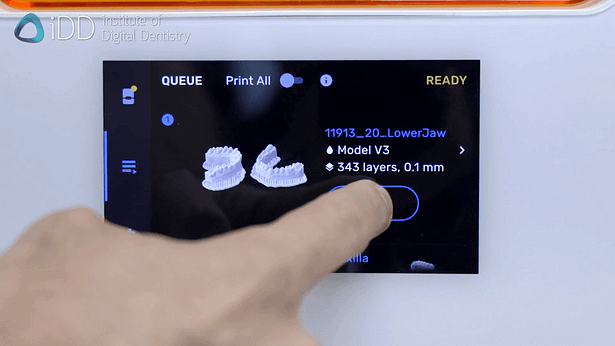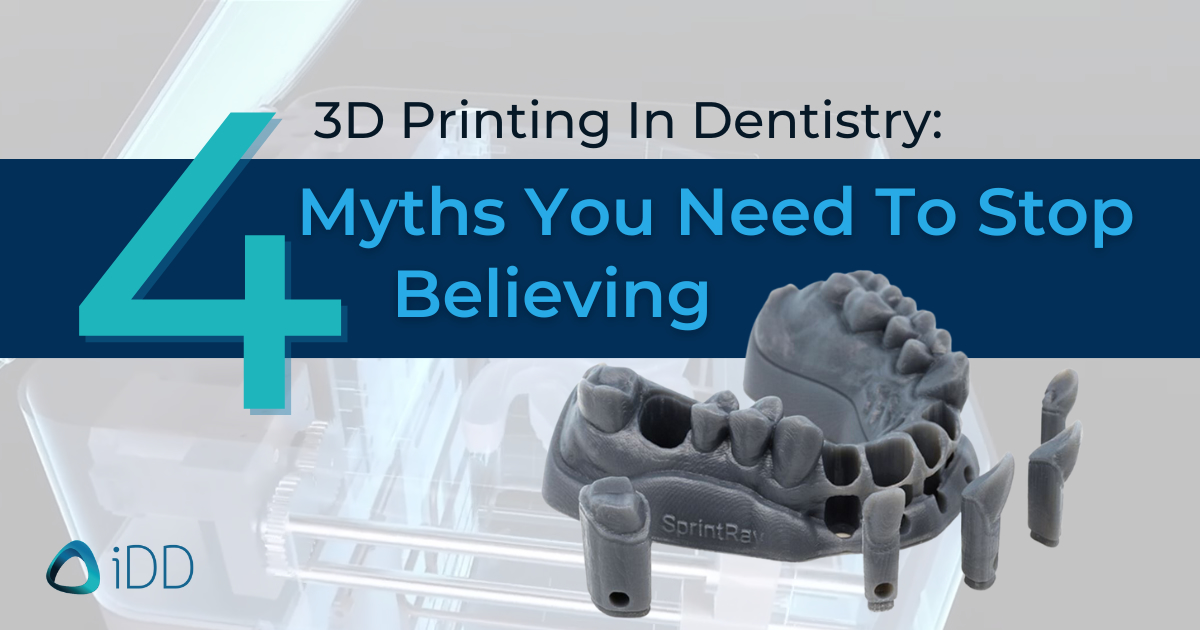3D printing is revolutionizing the dental field, and its capabilities are incredible. However, as with any technology, there are pros and cons to using 3D printing in dentistry. New research is constantly emerging that can help to separate myth from fact, and it’s overwhelming to stay up-to-date with all of this information. But, understanding the capabilities and limitations of this technology is the key to success.
3D printing is being used in dentistry for a variety of applications, including the creation of custom implant surgical guides, fixed and removable prosthetics, occlusal guards, and more.
3D printing has become increasingly popular in the dental industry for its ability to not only help dentists plan and strategize complex dental surgery, but the ability to print and fabricate appliances, crowns, fillings, and more chairside.
Without the limitations of milling and grinding or analog work, 3D printing in dentistry has opened many doors to what was only thought possible for a large digital dental lab. Despite the many benefits of 3D printing in dentistry, there are still some misconceptions about this technology.
In this article, we’ll dispel four of the most common myths about 3D printing in dentistry.
Myth #1: 3D Printing is Only for Large Dental Practices
Some people believe that 3D printing is only for large dental practices. This couldn't be further from the truth!
Many small dental practices are taking advantage of 3D printing because of how useful and versatile it is. Training is usually always included in the purchase.
When mistakes are made, they can easily be re-printed for next to nothing. Having a hand in every part of the process when things are designed and made gives a learning opportunity at every corner. Not to mention, saving on a lab bill to remake what a patient has lost - or a dog chewed - is appreciated by the dentist and patient alike.
The cost of 3D printers has significantly decreased in recent years, making the technology much more accessible for smaller practices. Furthermore, the versatility of 3D printers means that they can be used for a variety of applications, from model-making to creating custom dental implant restorations and shell temporaries.
Additionally, 3D printing is a great way for small dental practices to stay relevant in an ever-changing industry. By investing in 3D printing technology, dental practices can provide their patients with the latest treatments and procedures, giving them a competitive edge.
The ability to save and reprint removes lab bills, shipping costs, lab wait times and massively improves patient satisfaction.
Some doctors can give the patient an opportunity to buy multiple guards of dentures at a significant discount. Printing multiple of the same appliance decreases cost and increases profit even more.
Myth #2: 3D Printing is Only for Advanced Procedures
3D printing can be used for everything - not just advanced procedures. This assumption downplays the ways this technology can be used by dental practices, particularly for more mundane procedures.
A 3D printer can easily pay for itself in one year if used to create only one occlusal guard per day at $400.
Despite being though of as a cutting-edge technology, 3D printing has many everyday applications. By utilizing the newest technologies, dentists and patients alike can benefit from shorter treatment times for resin onlays and ceramic crowns — up to 10 minutes!
Although this technology is still relatively new, its potential for enhancing efficiency and affordability in dental treatments is promising.
Moreover, 3D printing can be used to produce models and dentures far more quickly compared to traditional techniques. By taking advantage of its customizability and speed, 3D printing can help dental practices create accurate, cost-effective, and timely treatments.
Myth #3: 3D Printing is Expensive
A lot of people believe that 3D printing is expensive and cost-prohibitive. This can be true for larger machines, but it is also true that desktop 3D printing technologies have become much more budget-friendly in recent years.
Desktop 3D printers such as those made by SprintRay and Asiga are relatively affordable and accessible to everyday dental practices. 3D printing eliminates the cost of ordering multiple molds or dentures. With 3D printing, the dental practice can produce the same treatment with one model at a fraction of the cost.
As discussed above, 3D printing technology can pay for itself in just one year when utilized properly, meaning that it can save your practice money over its lifetime of use. Moreover, 3D printing is also faster than traditional manufacturing processes, leading to labor cost savings. All this translates into a quicker turnaround time for your clients, ensuring their satisfaction with timely product delivery—without any need for third-party involvement.
When looking to purchase a dental 3D printer, one should consider both the short and long-term economic advantages.
Myth #4: 3D Printing can only be done by the Dentist
One of the myths about 3D printing is that it can only be done by a dentist. This is simply untrue. Dental assistants can be trained and proficient in many aspects of digital dentistry, including 3D printing.
With the right training and knowledge, dental assistants can be just as capable of using 3D printing. Dental assistants or technicians can use the same advanced software, materials, and printing techniques that dentists do, to produce high-quality printed models that can be used for a variety of purposes.
Additionally, because dental assistants are already familiar with the dental office environment, they can often provide a more efficient and seamless integration of 3D printing in the office.

Conclusion
In conclusion, 3D printing represents a great opportunity in the field of dentistry. With 3D printing, dentists can offer more precise and accurate treatments, speed like not seen before, and increased accuracy in all used applications.
At the same time, 3D printing technologies are becoming more affordable and accessible for everyday dentists and patients. By investing in 3D printers, dentists can easily create high-quality 3D models of patients' mouths and teeth, offering precise treatments and perfect smiles.
Overall, the future of dentistry with 3D printing looks incredibly bright. It has the potential to revolutionize dentistry as we know it and make it much easier and more efficient for assistants, dentists, and patients.
Need 3D Printing Training?
Check out our 3D printing and design course bundle, consisting of 5 courses plus 5 special bonuses.
Learn everything you need to implement 3D printing in your clinic.

